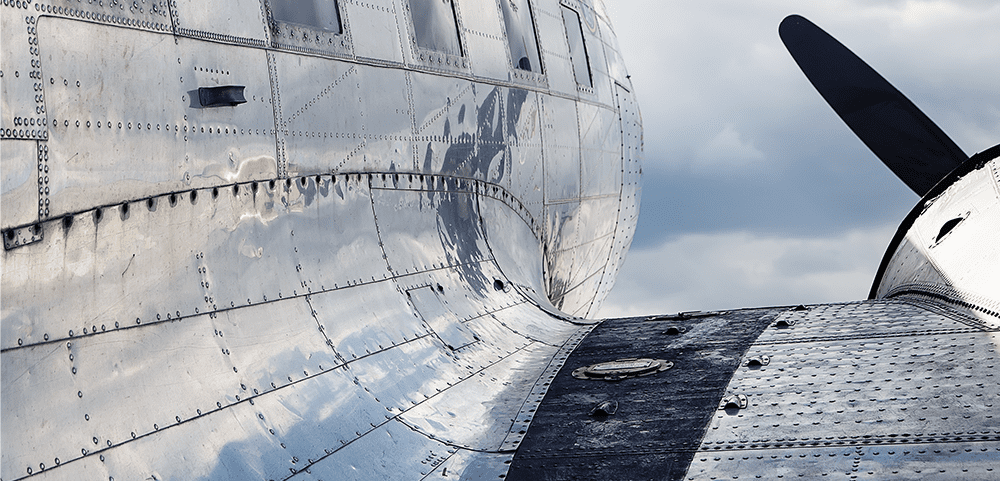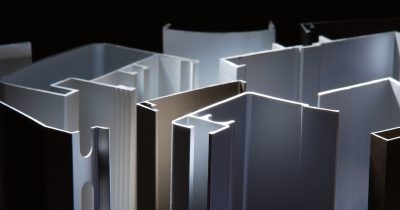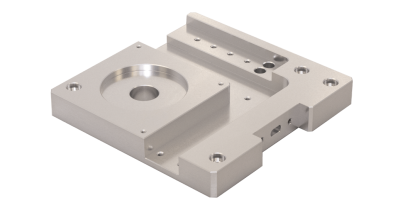What is Aluminum?
Material Overview and Design Considerations

Aluminum/Aluminium is the most used non-ferrous metal due to its unique features not found in iron-based metals. Understanding its characteristics and selecting the right grade, processing method, and heat treatment are crucial when designing products. Let’s explore the different types and properties of aluminum.
Table of Contents
Key Features of Aluminum
Aluminum possesses several excellent characteristics, including: lightweight, strong, corrosion-resistant, workable, high thermal conductivity, high electrical conductivity, recyclable, non-magnetic, resistant to low temperatures, reflective of heat and light, visually appealing, and non-toxic.
Lightweight
Aluminum has a specific gravity (density) of about 2.7, roughly one-third of steel. Its light weight makes it highly desirable in industries such as transportation (aircraft, satellites, and bullet trains), construction, and electronics (mobile phones).
Strong
Alloying pure aluminum with other metals can enhance its specific strength. Alloys like the 7000 series, which are heat-treated with added zinc and magnesium, exhibit excellent strength. A7075 (extra super duralumin), for instance, is widely used in aircraft parts.
Corrosion-resistant
Aluminum readily reacts with oxygen, forming a dense oxide film on its surface that acts as a protective layer, preventing corrosion. Its high corrosion resistance makes it ideal for marine, shipbuilding, and architectural applications. There are also reports of no issues even after 30 years of use in areas exposed to beach breezes.
Workable
Aluminum is highly malleable, making it suitable for various processing methods. Its low melting point and good flow characteristics make it ideal for casting. It can be easily cut and welded, allowing for the creation of a wide range of shapes, including thin-walled shapes, such as aluminum foil, to complex shapes.
High Thermal Conductivity
Aluminum’s thermal conductivity is approximately three times that of iron, making it ideal for use in automobile radiators, heat exchangers, and electronic device radiators.
High Electrical Conductivity
Aluminum carries twice as much current as copper of the same weight. This property, combined with its lightweight nature, makes it an attractive material for power transmission lines. It helps to widen the spacing between towers and reduce costs.
Recyclable
Aluminum does not deteriorate easily, even after long-term use, and has a low melting point, making it easily recyclable by melting down the product after use. Recycling aluminum requires only 3% of the energy needed to make new products, and the quality of recycled aluminum is almost equivalent to that of new products.
Non-magnetic
Aluminum is non-magnetic and is unaffected by magnetic fields around it. This property makes it suitable for use in parabolic antennas, medical equipment, magnetic compasses, and superconductivity-related products. It is also cheaper than other non-magnetic materials such as gold, silver, and copper.
Resistant to Low Temperatures
Even under extremely low temperatures such as liquid nitrogen (-196°F) and liquid oxygen (-183°F), aluminum maintains its strength and may even increase in strength. This property makes it suitable for use in low-temperature plants, LNG (liquefied natural gas) tanks, space exploration, and biotechnology.
Reflective of Heat and Light
Aluminum has the ability to reflect infrared rays, ultraviolet rays, and electromagnetic waves. Increasing its purity or applying a mirror finish can further enhance its reflectance, making it suitable for use in heating reflectors, space suits, and polygon mirrors.
Visually Appealing
Aluminum has a natural beauty, which can be further enhanced by surface treatments such as Alumite treatment. It can also be colored using electrolytic coloring, making it suitable for use in building exteriors and packaging materials.
Non-toxic
Aluminum does not react with food and is non-toxic. Even if ingested, more than 99% of it is excreted from the body, posing no harm to the soil. It is commonly used in food and drug packaging containers and medical devices.
Considerations When Using Aluminum
While aluminum has many excellent features, there are also some considerations:
Lower Strength Compared to Steel
Although aluminum has excellent specific strength, its strength is lower than that of steel. It is suitable for soft and pliable structures such as airplane wings but may not be suitable for parts requiring high strength, such as gears.
Corrosion Considerations
Although aluminum is rust-resistant, it may corrode in salty environments or when it meets dissimilar metals. To prevent corrosion, alumite treatment may be necessary.
High Coefficient of Linear Expansion
Aluminum has a coefficient of linear expansion nearly twice that of iron-based materials. Parts that experience large thermal stresses and are repeatedly heated and cooled may suffer from thermal fatigue failure.
No Fatigue Limit
Unlike ferrous materials, aluminum does not have a fatigue limit—the lower stress limit at which metal fatigue does not occur. Therefore, during design, it is necessary to compare the fluctuating stress that occurs during use with the SN diagram to ensure there are no strength problems even if cracks develop over the expected product life.
Difficult to Weld
Aluminum’s oxide film has a high melting point of about 3632°F, requiring its removal before welding. Additionally, aluminum’s high thermal conductivity and low melting point mean that heat during welding is quickly transmitted to the base metal, which may cause the base metal to fall out. Welding aluminum requires careful control of the welding torch speed. For best results, consider using a company with a proven track record for aluminum welding.
Typical Types of Aluminum
Pure aluminum has low strength, so other metals are usually added to form an alloy. By adding iron, zinc, magnesium, copper, etc. to aluminum, diverse types of alloys can be created.
Industrial aluminum materials are broadly classified into wrought aluminum alloys and cast aluminum alloys, depending on the final product’s use. Wrought aluminums can be processed using plastic deformation, while cast aluminums are used for casting. Let’s review the types of wrought aluminum alloys here.
Wrought aluminum alloys
- 1050 Aluminum Alloy
1050 Aluminum Alloy (1050 AA) is a typical pure aluminum grade. Although it has low strength, it has excellent workability and corrosion resistance, making it suitable for decorative items and power transmission lines. - 2017 Aluminum Alloy
2017 Aluminum Alloy (2017AA), also known as duralumin, has low corrosion resistance but high strength, making it suitable for use in planes, automobiles, and mechanical parts. - 2024 Aluminum Alloy
2024 Aluminum Alloy (2024 AA), or super duralumin, offers higher strength than 2017 AA. - 5052 Aluminum Alloy
5052 Aluminum Alloy (5052 AA) has excellent corrosion resistance, workability, and weldability, making it the most widely distributed aluminum alloy. It is used for frame materials and sheet metal parts. - 6061 Aluminum Alloy
6061 Aluminum Alloy (6061 AA) is an aluminum alloy with excellent corrosion resistance. Heat treatment, such as T6 treatment, enhances its corrosion resistance further. - 6063 Aluminum Alloy
6063 Aluminum Alloy (6063 AA) is an aluminum alloy with excellent corrosion resistance and surface treatment properties, mostly used in extruded products such as aluminum sashes and electrical materials. - 7075 Aluminum Alloy
7075 Aluminum Alloy (7075 AA), or extra-super duralumin, has the highest strength among aluminum alloys. Widely used in aircraft, it has been integral to aircraft construction, including significant contributions to aircraft performance during wartime.
Comparing Aluminum to Other Primary Metals
The table below compares the characteristics of aluminum with other metal materials, highlighting aluminum’s ease of use and excellent properties such as low specific gravity, corrosion resistance, and workability.
| Aluminum Alloy | Carbon Steel | Stainless Steel | Copper | |
|
the U.S. Standardization |
ANSI/AA 5052 | AISI 1018 | AISI/SAE 304 | ASTM C11000
CDA C110 |
| JIS | A5052 | SS 400 | SUS 304 | C1100 |
| Strength | △ | 〇 | 〇 | × |
|---|---|---|---|---|
| Corrosion Resistance | ◎ | × | ◎ | 〇 |
| Processability | ◎ | 〇 | 〇 | 〇 |
| Thermal Conductivity | ◎ | 〇 | △ | ◎ |
| Electrical Conductivity | ◎ | △ | △ | ◎ |
| Magnetic | none | can be | none *1 | none |
| Low-temperature Resistance | ◎ | × | ◎ *2 | ◎ |
| Safety | ◎ | ◎ | ◎ | ◎ |
| Weldability | △ | 〇 | 〇 | × |
*1 magnetism appears when deformed with large force.
*2 No low-temperature resistance other than austenitic stainless steel.
*3 The symbols in the table indicate comparisons for each material.
◎: Excellent 〇: Good △: Fair ×: Poor
Conclusion
Aluminum is a material with excellent characteristics such as strength, lightness, workability, and aesthetic appeal. Its high specific strength offers great advantages, making it suitable for a wide range of products. However, there are considerations to keep in mind. It’s important to familiarize yourself with aluminum’s characteristics and differences from other metal materials to use it effectively.
What’s meviy?
On-demand, fast sourcing of quality custom mechanical parts is made possible by meviy.
meviy is one of the most reliable on-demand manufacturing platforms in the US that allows you to get instant quotes for your mechanical parts simply by uploading 3D CAD data. No longer need to create 2D drawings just to quote parts. This platform supports sheet metal fabrication and CNC machining such as milling or turning and has saved time for over 160,000 mechanical designers and purchasers worldwide.






